TREES
(eight of them)
This weekend I visited friends overnight at a lovely rural spot in southern Miami County. There are trees here. Who knew? As Gabriel Popkin explained so well in her article (LINK), a lot of otherwise well-educated people are “tree blind.” I’m a botanist, so I guess I’m somewhat less tree blind than most folks, but still have a lot to learn, especially about oaks and hickories …and pines …and hawthorns, and…
Eastern Cottonwood
(Populus deltoides)
Growing alongside the long shared driveway leading back to the homestead there is a tall medium-aged cottonwood.
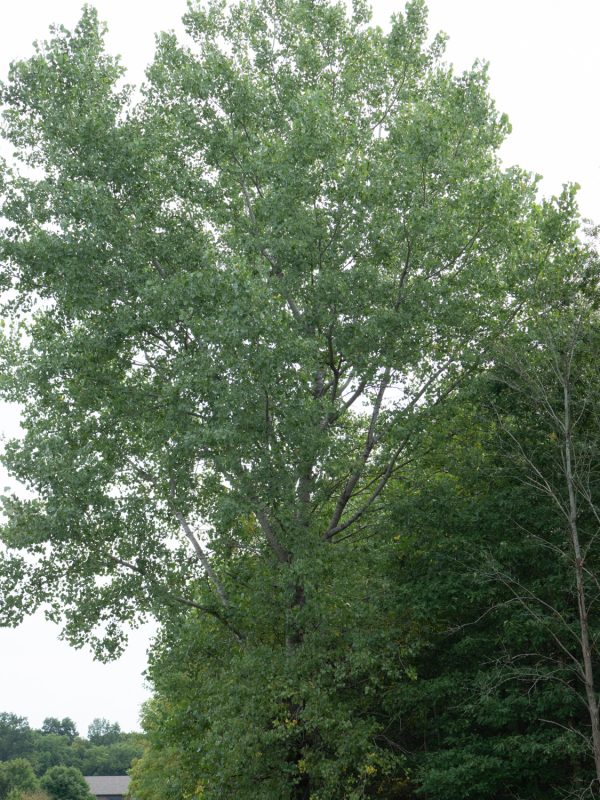
Eastern cottonwood is a fast-growing lowland tree.
This is a fast-growing lowland species, in the same genus (Populus) as aspen. Here’s a tree joke: Question: Why do places like Indonesia, India and China have so many aspen and cottonwood trees? Answer: Because those are very Populus places!
Eastern cottonwood leaves are distinctively triangular. The specific epithet “deltoides” in in reference to the leaf shape.

Cottonwood leaves are triangular (deltoid).
Aspen and cottonwood leaves tremble in the slightest breeze because they have flattened petioles. (I call them “linguine leafstalks.”)
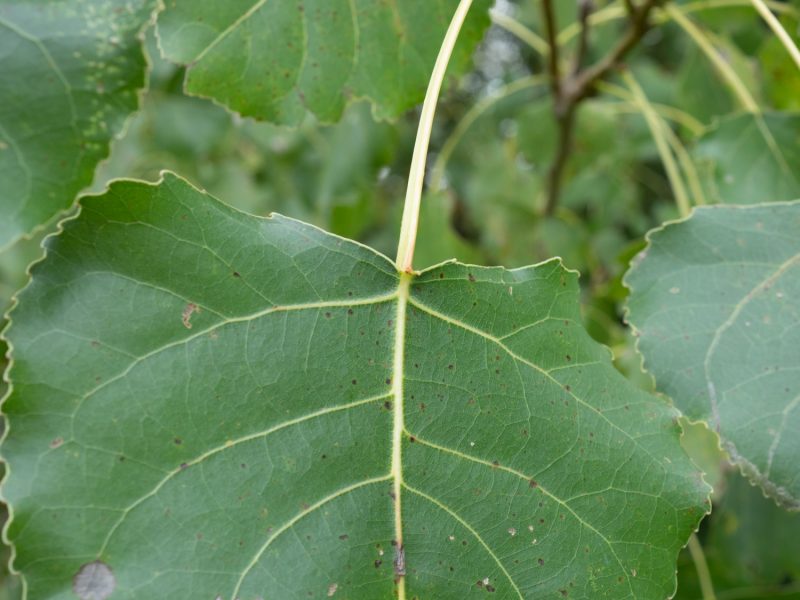
Linguine leafstalks!
Red elm
(Ulmus rubra)
Elm (genus Ulmus) have alternately arranged leaves that are simple in complexity, with a doubly-serrate margin, and a peculiarly unequal-sided leaf base. There are two common species in Ohio –American elm (U. americana) and red/slippery elm, U. rubra. They are quite similar. Red elm leaves are more scratchy above than are those of American elm, and there are also some differences in the bark and the fruits.
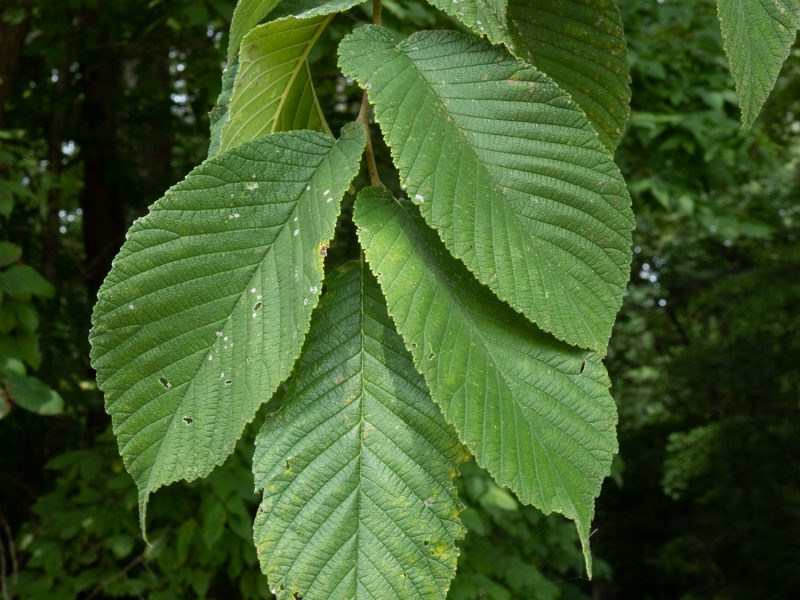
Red elm leaves are unequal-sided at the base, and doubly serrate.
In North America, elm tree populations are a mere remnant of what they once were. As explained very well by the Morton Arboretum, the disease –which is probably of Asiatic, not Dutch, origin was accidentally introduced to the U.S. in the 1930’s. It is a fungus that is carried by two species of bark beetles. All of our native elms are susceptible. The fungus blocks the water-carrying xylem tissue, causing affected branches to wilt and die. Because elms reproduce at an early age, there are still elms around, just not many forest giants like there once were. In her “tree blindness” article, Popkin mentions several other introduced tree pathogens, citing primarily the emerald ash borer as a consequence of global trade, whicj is noted to be “only the latest iteration of this sad story; chestnuts, hemlocks and elms have already taken major hits from foreign pests.”
Hackberry
(Celtis occidentalis)
Hackberry is a member of the elm family (Ulmaceae) and shares with elms the overall leaf appearance –simple, alternate, doubly-serrate, and with an unequal-sided leaf base.
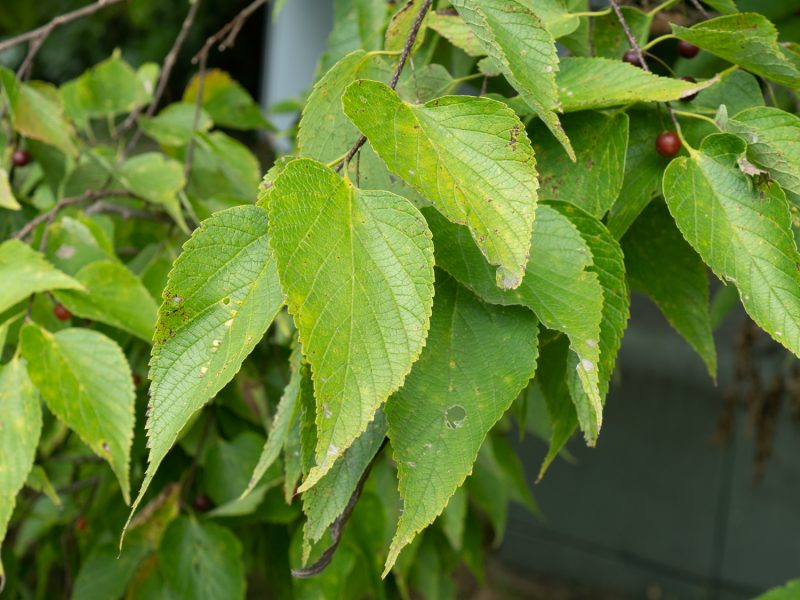
Hackberry is a member of the elm family, and has unequal-sided leaf bases.
Just based on the leaves, hackberry is a pretty indistinctive tree. It looks vaguely elm-like. In fruit, it stands apart from elms by bearing little pea-sized drupes, very unlike the dry flat winged samaras of elms.
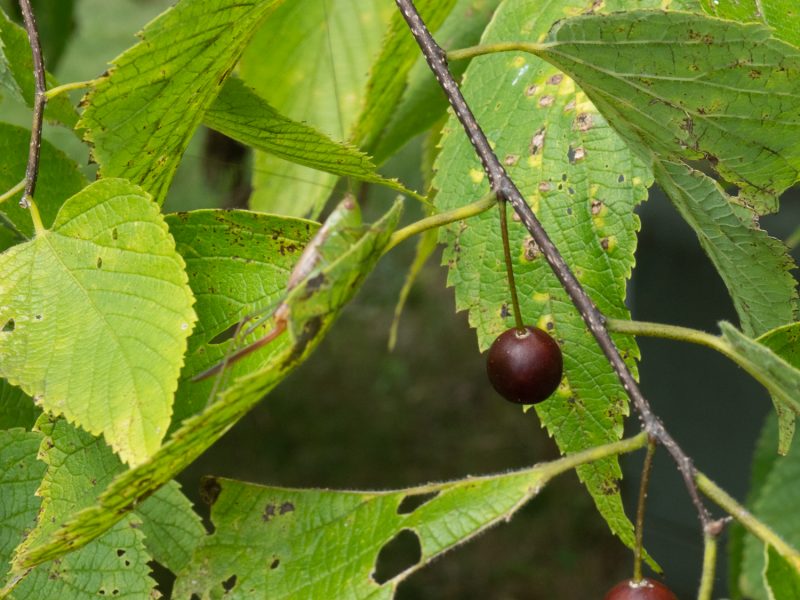
\The hackberry fruit is a pea-sized drupe. The flesh is edible, tasting vaguely date-like.
Now is a good time to look for little pencil-eraser shaped projections on the bottoms of hackberry leaves that are galls caused by a psyllid (a type of true bug in the order hemiptera). According to the Texas A&M extension service, these little bugs sometimes enter homes!
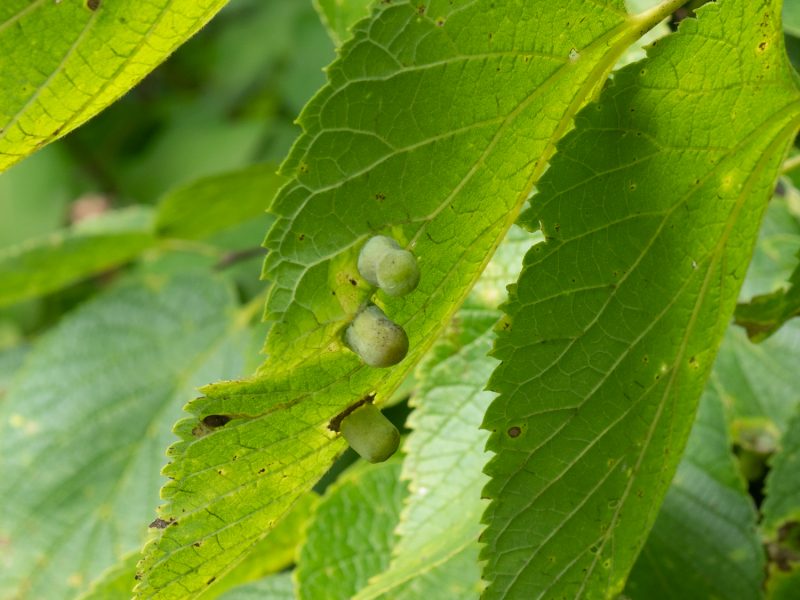
Leaf gall on hackberry.
Black walnut
(Juglans nigra)
When we teach this course n the Spring, the walnut trees aren’t leafed out until around week two! Walnuts have leaves that are alternately arranged, and pinnately compound, with many leaflets (compared with the closely related hickories).
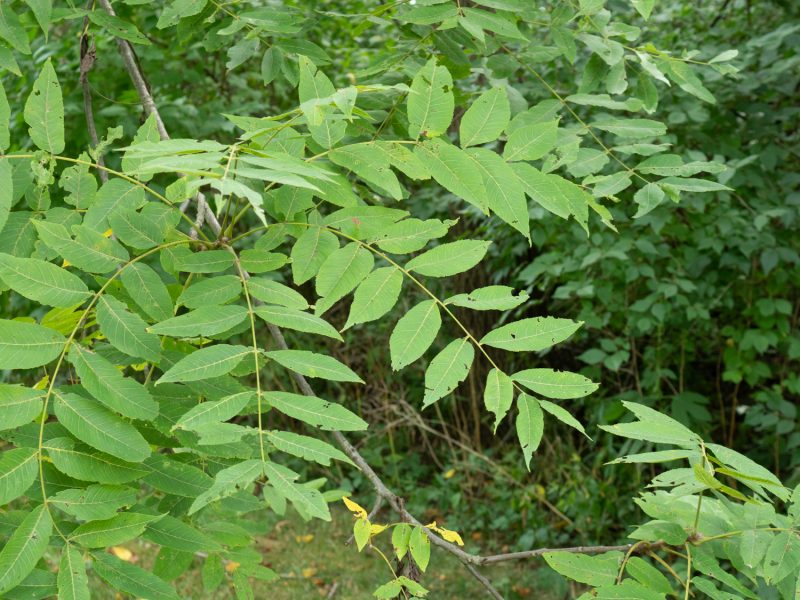
Black walnut leaves are pinnately compound.
Black walnut is a dramatic tree. It is most famous for being allelopathic, producing a toxic compound, juglone, that permeates the soil in a wide radius around a tree, and inhibits the growth of other plants. The University of Minnesota extension service lists plants according to their susceptibility to the toxin. Alfalfa, peppers, potato, eggplant and grape don’t fare very well. Some trees do OK though in the vicinity of a warrior walnut; redcedar, cherry, maple and elm are resistant. That makes sense, as the forest trees evolved in forests where walnuts were also prevalent, so adaptation seems likely.
Basswood
(Tilia americana)
Basswood is recognized by its alternate, cordate, coarsely serrate leaves. It’s a fast growing tree with soft wood, prized for carving craft items such as duck decoys.
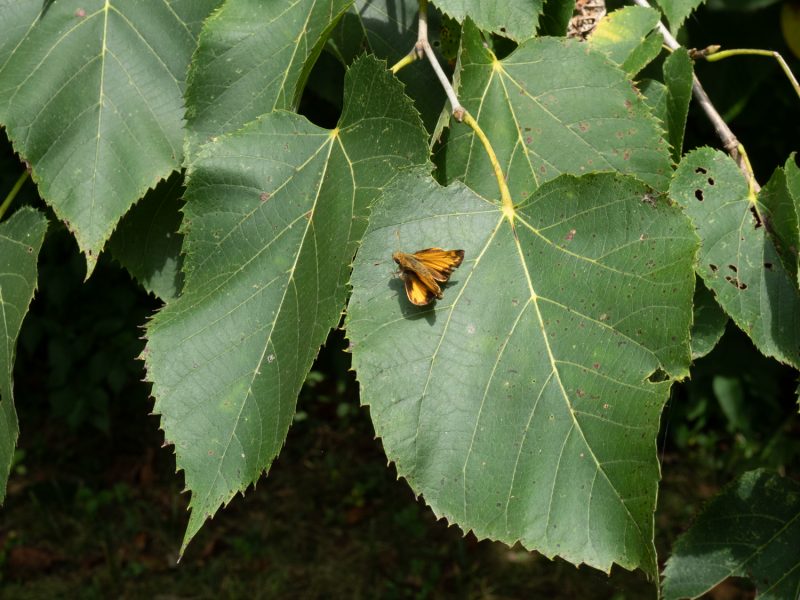
Basswood leaves are large, cordate, and coarsely serrate.
Basswood flowers, blooming in late June, are an important nectar source for honeybees in early summer when spring nectar sources are finishing up. They are produced in few-flowered axillary clusters at the end of stalks fused to a strap-shaped leaf-like bract, an apparent agent of wind dispersal of the fruits (dry pea-sized drupes).
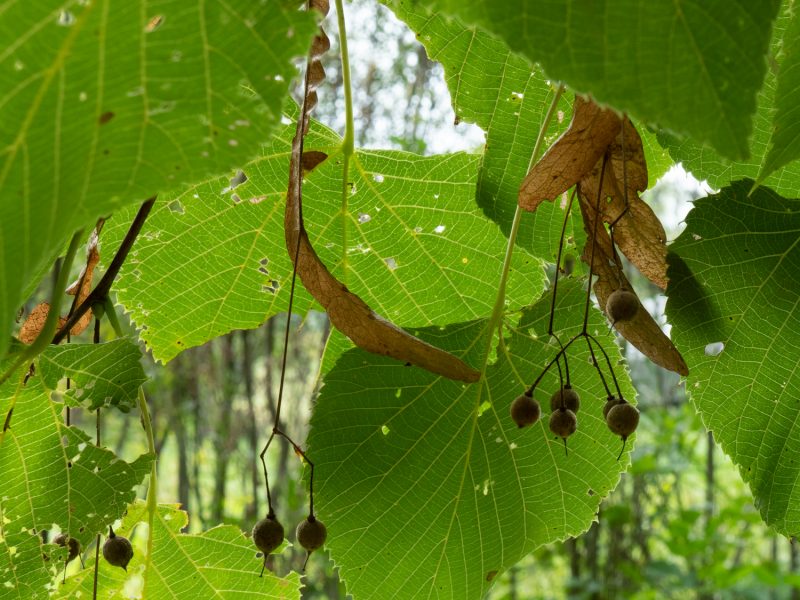
Basswood flowers are produced on leafy-bracted clusters.
George A. Petrides, in our “textbook” Peterson Field Guides Trees and Shrubs mentions that the inner bark of basswood, especially that of the roots, is tough and fibrous, suitable for twisting into mats, cords and lines.
Pawpaw
(Asimina triloba)
Pawpaw trees belong to a mainly tropical family, with one species here, near its northern limit. Although the specimen shown here –a solitary individual — was planted by my friend on this property, the species occurs wild in the adjacent woods where it forms clones of many stems connected underground.
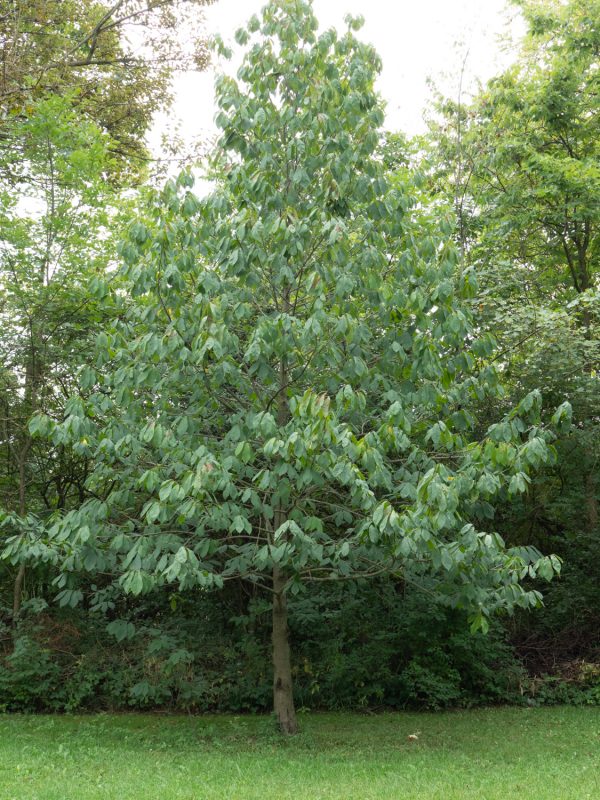
Pawpaw trees are excellent for wildlife and human consumption.
Pawpaw leaves are alternate, large, broadly oblanceolate in shape.
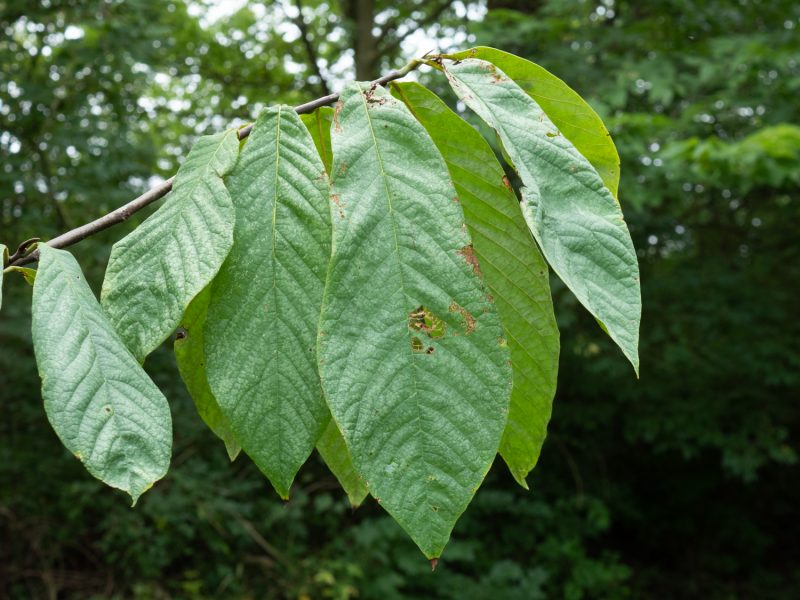
Pawpaw leaves are large, narrower at the base than the tip, and alternately arranged.
The fruits are oblong yellow fleshy berries, vaguely banana-like in flavor and texture. They are sometimes called “custard apples.” Petrides tells us that fully ripe ones are hard to find, as they are avidly consumed by opossum, squirrels, raccoons, and foxes.
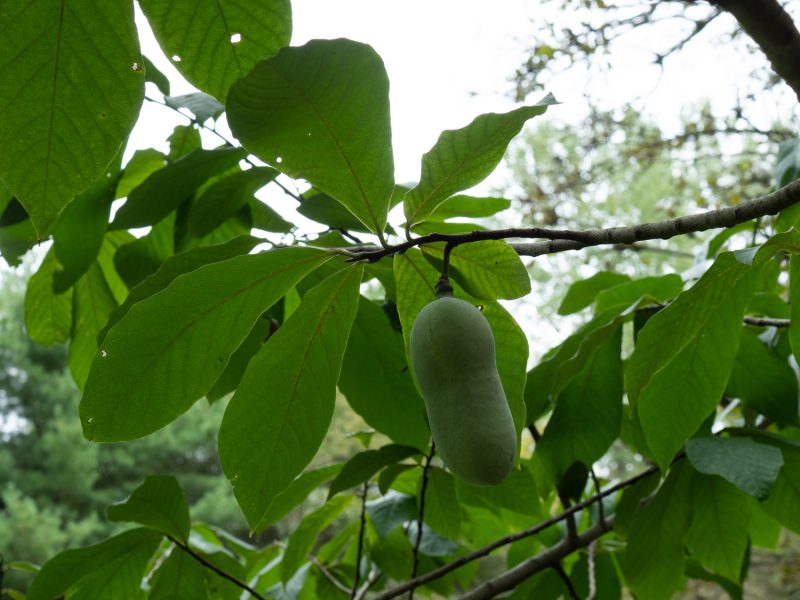
Pawpaws are large yellow berries.
Pin oak
(Quercus palustris)
Our native oaks have leaves that are alternate, simple, and (with one exception) either deeply or shallowly lobed. Pin oak is a member of the red oak group, i.e., the ones that have bristle-tipped leaves and bitter acorns that take two years to mature. Mature specimens can be told from a distance by the drooping lower branches.
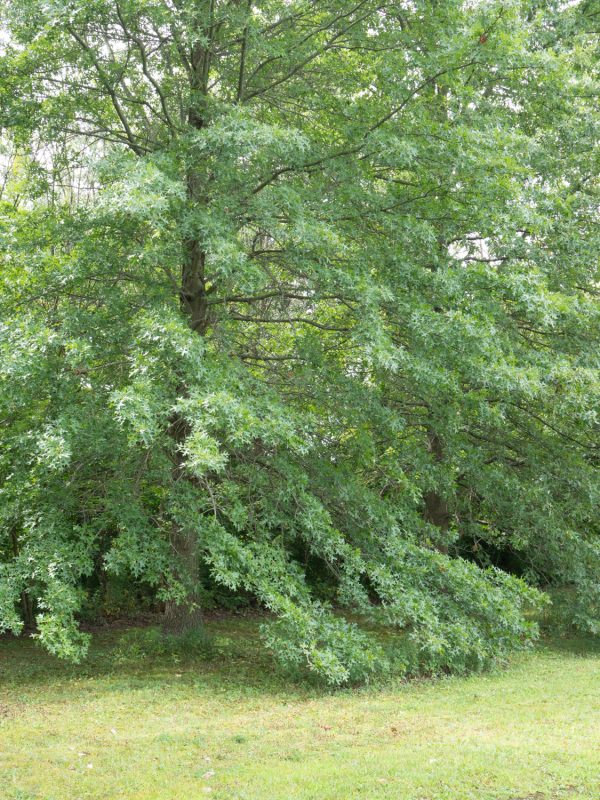
Pin oak has downward-pointing lower branches.
Pin oak leaves are quite deeply lobed.
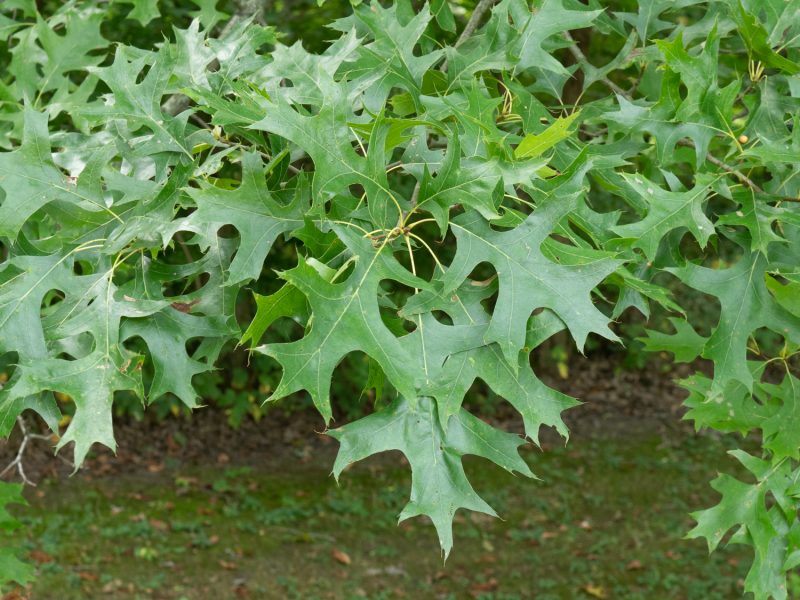
Pin oak leaves are bristle-tipped and deeply lobed.
Galls are specialized plant growth produced in response to attack by specific insects, another arthrodpods, or fungi, wherein the foreign organism completes its life cycle with little of no harm to the plant. Of all our trees, oaks are the ones with the greatest diversity of galls. Many are produced by small wasps. Here is a leaf gall on pin oak.
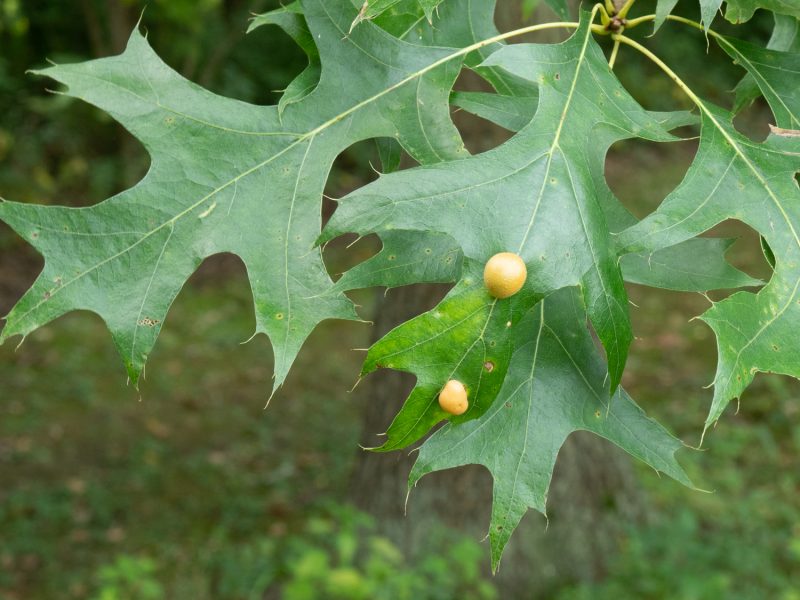
Leaf gall on pin oak, probably caused by a wasp.
Green ash
(Fraxinus pensylvanica)
Ashes are out only trees (save for one annoying maple, boxelder maple, sometimes called “ash-leaved maple”) with opposite pinnately compound leaves.
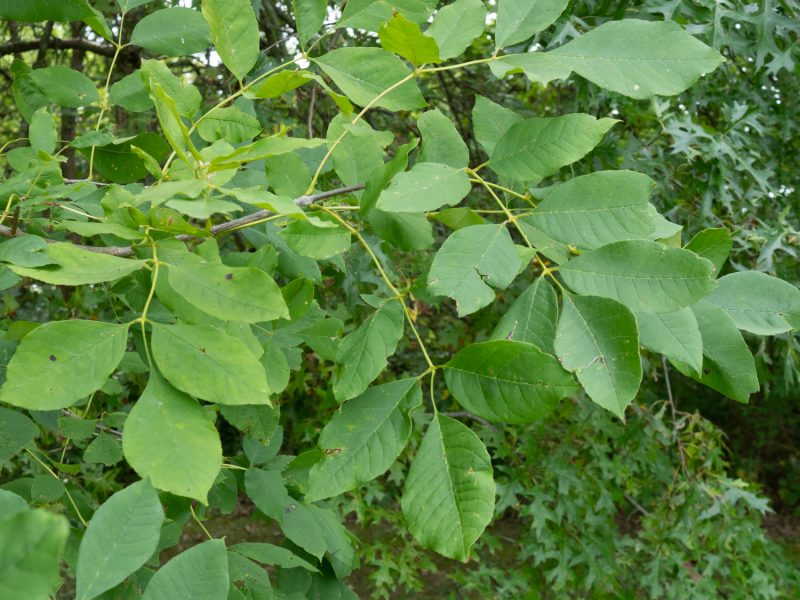
Ashes have opposite pinnately compound leaves.
The fruits os ashes are, like many forest trees, wind-dispersed. These are samaras, basically winged achenes.
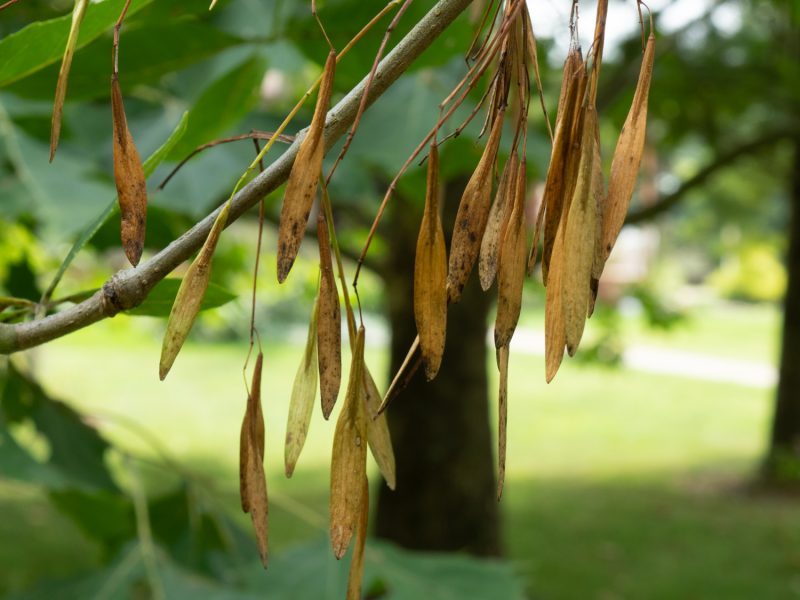
The ash fruit is a single samara, well suited for wind dispersal.
I concur with Gabriel Popkin, that being aware of trees is “more about seeing, and knowing. It’s about not being a stranger in my own country,” or, in this case, my best friend’s yard!
